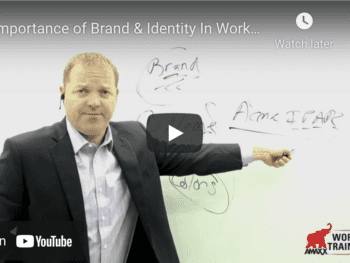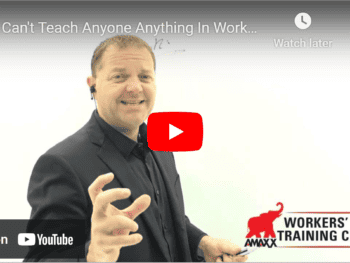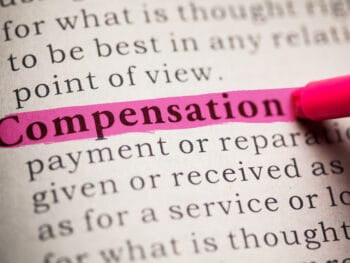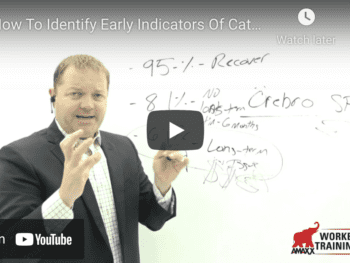Why Is It Important To Begin with the Assessment? Workers' compensation is a multi faceted issue. Often there is no "one thing" driving your costs upward, but a confluence of issues, a perfect storm, if you will, resulting in hemorrhaging workers' comp costs. People often don't know what they don't know. Much like going to a doctor's office for a physical, a diagnosis isn't made until all the tests, x-rays and specimens are taken. Then and only then can the physician come up with a complete picture of the patient's health and identify key issues causing distress. A workers' comp assessment does the same thing. One day I sat down and captured the key areas I've seen come into play in virtually every workers' compensation management project. Once you take this assessment, you can see it isn't just one driver sending your costs spiraling, rather it's several factors, acting together, causing costs to spiral. Over the past twenty years, I've identified ten key areas impacting workers' comp costs. My observations are based on hundreds of client projects I've assessed and resolved with succinct recommendations designed to build an action plan. Ten years ago, we conducted client assessments on-site for every site and the mere experience of assessing took over six months to a year. Often the project fixated on the assessment and it became very difficult to move the project into recommendations and implementation. The WorkersCompKit(R) assessment can be completed in an afternoon and yield recommendations immediately to move the project from concept to action. The assessment is not only quick, but also comprehensive — touching on topics raging from management commitment to programmatic aspects such as post injury response, return to work, communication and training. The assessment helps you to identify aspects of issues like claims handling that perhaps you never thought of before. 10 Key Assessment Areas 1. Management Commitment The assessment helps you determine the level of management commitment. How involved is your management in day to day operations? How cognizant are they are workers' compensation issues? Are there consequences for divisions having poor performance? 2. Insurance Company and Claims Administration Controls Claims handling can be overwhelming, but if you start with a phone call to your handler, you have taken the first step to gaining control in this area. Make it a point to meet regularly with your claims handler to review open claims, to document activities to date, and to plan strategies going forward. 3. Performance Goals Since workers' comp is measured in dollars and cents, performance goals should be couched in measurable statistical goals, so you can document progress at every step of the way. 4. Post Injury Response It is critical to have a solid post injury response procedure in place so within minutes of a work-related injury occurring, all parties know their roles and responsibilities to resolving the incident. Use the assessment to determine how well you are prepared to respond to injuries. 5. Communication Communication must be intentional not incidental. Use the assessment tie down the lines of communication. Do you have a workers' comp management brochure or a laminated card that employees can put on their lanyards along with their badges. Have you determine how well the communication programs you have in place are working. How to communicate with injured employees. Do you make every effort to stay in touch, keep the lines of communication open. Do you send a get well card, and call them every week? You should make sure all employees know transitional modified duty is expected as part of their recovery process. The assessment will tell you how far in line your practices are and identify specific areas where you need to improve. 6. Return to Work and Transitional Duty When employees are injured on the job, your goal is to return them to work as soon as they are medically able. Transitional duty (TD) enables injured workers to remain "on-the-job" while recovering from a work-related injury. You must have a transitional duty policy in place. Transitional duty is important to both employees and management as a tool to avoid the negative consequences occurring when employees are out of work for a long time. For employees, returning to work allows them to maintain important job skills and be part of the daily work routine. They avoid becoming "psychologically disemployed" and distanced from their work environment. Employers experience lower work comp costs by keeping the services and skills of trained employees (versus paying for temporary workers – always costing more), improving employee retention and avoiding costly lawsuits. You are also able to monitor employee recovery and prevent re-injury. 7. Medical Care Coordination How medical care is handled during recovery is another determinate of cost savings. Examine your medical cost containment and care coordination practices to discover the best ways for employers to insinuate themselves into this process. Too many employers believe the medical aspects of workers' comp management are outside their realm of control. The assessment shows the areas where you do have control, and helps you examine ways to exert this control. 8. Medical Cost Containment Often employers think medical cost containment is an area of which they have little control. Controlling medical costs is achievable by reducing the number of treatment and/or reducing the cost of treatments. Think about engaging the services of a third-party administrator (TPA) to administer your claims. Although there will be fees, the benefits outweigh the investment. The key to using a cost containment service is to thoroughly vet them and know exactly what is being offered and how they match your needs. Organize a vendor day to learn about your claims handler's services and explore services companies in your area to supplement what your adjuster offers. 9. Fraud, Abuse & Malingering The main point in controlling fraud is to jump on it immediately. DON'T WAIT. While it's true most injury claims are legitimate, it's the tiny few fraudulent claims that will cost you the most in time and money. Investigations are a useful tool to control workers' compensation costs when you need to determine the legitimacy of a claim. Be prepared to document and substantiate any suspicious claim from simple observation to videotaping activities. Communicate to your employees your "anti-fraud" policy, to make sure all employees know EVERY suspicious claim will be investigated and if found legitimate, prosecuted. You know what is said about an "ounce of prevention." So, when it comes to controlling fraud don't be the 200 pound gorilla in the room. 10. Training Initiatives Training is key to turning employee cultures around and integrating workers' comp management into the culture so it is practiced along with the other business practices employees engage in. Use the assessment to help you examine training initiatives you can use to augment implementation. Trained employees are more likely to respond appropriately in the event of a work-related incident, thus avoiding unwanted, unnecessary costs and bringing incidents to resolution quickly and efficiently. (workersxzcompxzkit) Sounds overwhelming?!? Maybe — but taking the assessment will help you pinpoint what areas you have in place, and what areas require implementation. In this way, you don't start from scratch, because the assessment shows where you are on the journey to best practices — your ultimate goal. From there, you can formulate the recommendations into an action plan, a timeline to success, and, I predict, much lower costs associated with workers' compensation. Author: Rebecca Shafer, J.D. consults for mid-market and national accounts focusing on project management, risk management assessments, data review, benchmarking, and development of Workers' Compensation and Injury Management Programs. Projects focus on development of training and education programs, document design, evaluation and integration of insurance claims administration and TPA services. Contact her are: RShafer@ReduceYourWorkersComp.com Budding writer? Contact us at: Info@WorkersCompKit.com.
Don’t Miss These Ten Areas When Assessing Your Workers Compensation Program
WC Calculator: www.reduceyourworkerscomp.com/calculator.php Follow Us On Twitter: www.twitter.com/WorkersCompKit Return to Work in Unionized Companies http://reduceyourworkerscomp.com//Return-to-Work-Programs-Unionized-Companies.php
Do not use this information without independent verification. All state laws vary. You should consult with your insurance broker or agent about workman’s comp issues. ©2009 Amaxx Risk Solutions, Inc. All rights reserved under International Copyright Law. If you would like permission to reprint this material, contact Info@WorkersCompKit.com
















